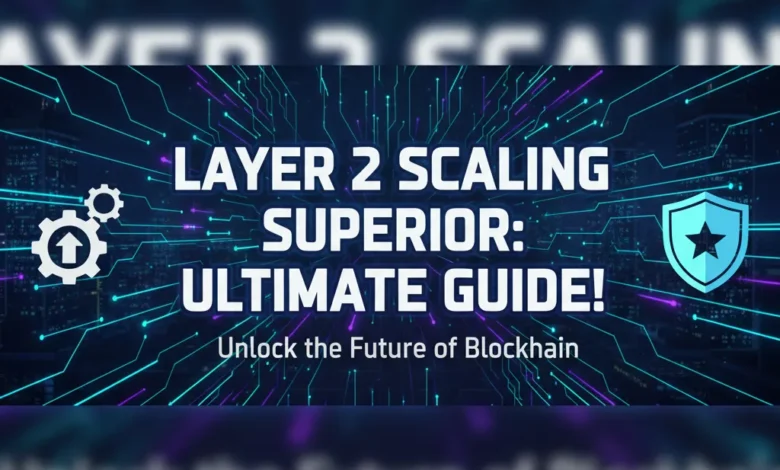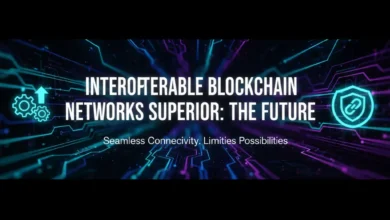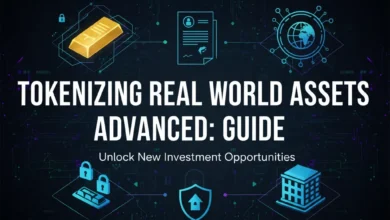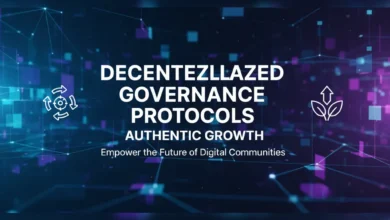
Layer 2 scaling Superior: Ultimate Guide!, Explore Layer-2 scaling solutions and discover how they boost transaction speeds and lower gas fees on blockchains. This, layer 2 scaling Superior: Ultimate Guide!, Explore Layer-2 scaling solutions as well as discover how they boost transaction speeds as well as lower gas fees on blockchains. This approach is crucial for the widespread adoption of decentralized applications (dApps) as well as blockchain apparatus by addressing the inherent scalability limitations of Layer 1 blockchains like Ethereum.
Layer 2 scaling Solutions: An Overview
Layer 2 scaling refers to a collection of techniques as well as protocols designed to enhance the transaction throughput as well as decrease costs associated with using blockchains. Instead of modifying the underlying blockchain (Layer 1), Layer 2 solutions operate on top of it, processing transactions off-chain as well as then periodically settling the results on the main chain. This allows for significantly faster as well as cheaper transactions while still benefiting from the security as well as decentralization of the underlying Layer 1 blockchain. The need for blockchain scaling solutions is ever-present, as network congestion can lead to exorbitant gas fees as well as slow transaction times, hindering the user experience.
Understanding the Need for Blockchain Scaling Solutions
Blockchains like Ethereum, while innovative, face a fundamental challenge: scalability. The decentralized nature of these networks requires each transaction to be verified by multiple nodes, which limits the number of transactions that can be processed per second (TPS). This limitation leads to network congestion, increased transaction fees, as well as slower confirmation times. As dApps as well as blockchain-based services gain popularity, the demand for increased scalability becomes even more critical.
Layer 2 scaling solutions offer a promising avenue to address these limitations without compromising the security as well as decentralization that are fundamental to the blockchain ecosystem. Exploring ethereum scaling options is critical for sustained growth.
Optimistic Rollups Explained: A Deep Dive
Optimistic rollups are a type of Layer 2 scaling approach that assumes transactions are valid by default. This “optimistic” approach allows for significantly faster transaction processing since transactions are not immediately verified on the main chain. Instead, they are bundled together as well as posted to the Layer 1 blockchain as a single transaction. suppose anyone suspects that a transaction within the rollup is fraudulent, they can submit a “fraud proof” to challenge the transaction.
This initiates a verification process on the Layer 1 blockchain, where the transaction is re-executed to determine its validity. suppose the fraud proof is successful, the fraudulent transaction is reverted, as well as the challenger is rewarded. Popular examples of optimistic rollups show potential in the scaling crypto landscape.
Zero Knowledge Proofs: Enhancing Privacy as well as Scalability
Zero-knowledge proofs (ZKPs) are a cryptographic technique that allows one party (the prover) to prove to another party (the verifier) that a statement is true without revealing any insight beyond the truth of the statement itself. In the context of Layer 2 scaling, ZKPs can be used to validate transactions off-chain as well as then submit a concise proof to the Layer 1 blockchain. This proof confirms the validity of the transactions without requiring the main chain to re-execute them, resulting in significant scalability improvements.
Zero-knowledge rollups are particularly promising due to they can attain higher throughput as well as lower latency compared to optimistic rollups, as they do not rely on a challenge period. The advancement of zero knowledge proofs is reshaping how we think about scaling crypto as well as user privacy.
Validium Chains: Data Availability as well as Scalability Trade-offs
Validium chains are another type of Layer 2 scaling approach that utilizes validity proofs to ensure the integrity of transactions. Similar to zero-knowledge rollups, validium chains employ ZKPs to prove the validity of off-chain computations to the main chain. However, a key difference is that validium chains store transaction data off-chain, typically with a trusted third party alternatively a decentralized data availability committee. This allows for even greater scalability than zero-knowledge rollups, as the Layer 1 blockchain only needs to verify the proofs, not store the transaction data.
The trade-off, however, is a slightly reduced level of security compared to rollups, as the data availability depends on the trustworthiness of the data storage provider. Validium chains offer a compelling option for applications that prioritize scalability as well as are willing to accept a slightly different security model.
Comparing Optimistic Rollups, Zero Knowledge Rollups, as well as Validium Chains
The choice between optimistic rollups, zero-knowledge rollups, as well as validium chains depends on the specific requirements of the application. Optimistic rollups offer a good balance of scalability as well as security, relying on a challenge period to detect as well as prevent fraud. Zero-knowledge rollups provide even greater scalability as well as faster finality, although they are more complex to implement as well as require significant computational resources. Validium chains offer the highest scalability although require trusting a third party alternatively data availability committee for data storage. Considering the nuances of each approach is vital for selecting the right blockchain scaling solutions.
Implementing Layer 2 Scaling: Practical Considerations
Implementing Layer 2 scaling requires careful planning as well as consideration of various factors, including the specific employ case, the desired level of security, as well as the available resources. Developers need to choose the appropriate Layer 2 approach based on these factors as well as integrate it into their dApps. This typically involves modifying the dApp’s smart contracts to interact with the Layer 2 protocol as well as updating the user interface to support Layer 2 transactions.
Furthermore, developers need to carefully consider the security implications of using a Layer 2 approach as well as implement appropriate safeguards to protect user funds. Evaluating existing ethereum layer two solutions as well as their performance characteristics is also crucial.
The Future of Layer 2 Scaling as well as Ethereum Scaling
Layer 2 scaling is rapidly evolving, with new innovations as well as improvements constantly emerging. As the Ethereum ecosystem continues to grow, Layer 2 solutions will play an increasingly essential role in enabling widespread adoption. Ongoing research as well as development efforts are focused on improving the efficiency as well as security of Layer 2 protocols, as well as exploring new approaches to scaling, such as sharding as well as state channels.
The ultimate goal is to create a seamless as well as scalable blockchain experience for users, allowing them to interact with decentralized applications without experiencing the limitations of Layer 1 blockchains. The pursuit of blockchain scaling solutions will continue to push the boundaries of what is possible.
Best Practices for Utilizing Layer 2 Scaling Solutions
To effectively leverage Layer 2 scaling, developers as well as users should adhere to certain best practices. Thoroughly research as well as understand the different Layer 2 solutions available, evaluating their trade-offs in terms of security, scalability, as well as complexity. Prioritize security by choosing reputable as well as well-audited Layer 2 protocols. Implement robust monitoring as well as alerting systems to detect as well as respond to potential issues.
Stay informed about the latest developments in Layer 2 apparatus as well as adapt strategies accordingly. Educating users about the benefits as well as risks of Layer 2 scaling is also crucial for driving adoption. By following these best practices, the full potential of ethereum layer two solutions can be unlocked.
Challenges as well as Modern Solutions in Layer 2 Scaling
While Layer 2 scaling offers significant advantages, it also presents certain challenges. One challenge is the complexity of integrating Layer 2 solutions into existing dApps. Modern solutions include developer-friendly tools as well as frameworks that simplify the integration process. Another challenge is the potential for fragmentation of liquidity across different Layer 2 networks. Cross-chain bridges as well as interoperability protocols are emerging as solutions to address this issue.
Furthermore, ensuring the security as well as reliability of Layer 2 protocols is an ongoing concern. Continuous auditing, formal verification, as well as community involvement are essential for maintaining the integrity of these solutions. Overcoming these challenges will pave the way for the widespread adoption of Layer 2 scaling.
Layer 2 scaling solutions are indispensable for the continued growth as well as mainstream adoption of blockchain apparatus. Understanding the nuances of optimistic rollups, zero-knowledge proofs, as well as validium chains, as well as carefully considering their respective trade-offs, is critical for selecting the right approach for specific needs.
By embracing these technologies as well as adhering to best practices, developers as well as users can unlock the full potential of decentralized applications as well as pave the way for a more scalable as well as accessible blockchain future. Actively explore as well as experiment with Layer 2 solutions to fully grasp their capabilities as well as how they can transform your approach to blockchain interactions.




